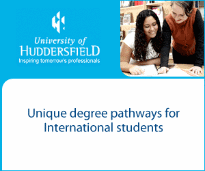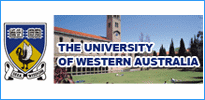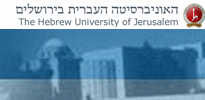Philippines: Philippines Education Profile
2015/02/16

Education in the Philippines has a similar system to that of the United States. Filipino children enter public school at about age four, starting from Nursery up to Kindergarten. At about seven years of age, children enter a 'primary school' (6 to 7 years). This is followed by secondary school (4 years). Students again sit for the College Entrance Examinations (CEE), next which they enter collegiate school (3 to 5 years).
Other types of schools do exist, such as Private schools, Preparatory schools, International schools, Laboratory High Schools and Science High Schools. As well, several nationalities, such as the Chinese, British, Americans, and the Japanese as well have their own schools. The school year in the Philippines starts in June of one year and ends in March of the next, with a two-month summer break for April and May, one week of semestral break (the last week of October), and a week or two of Christmas break.
Primary school
Primary school is as well called 'Elementary school'. It consists of six levels, with some schools adding an additional level (level 7). The levels are grouped into two primary subdivisions, Primary-level, which includes the initial three levels, and Intermediate-level, which includes the last three levels.
Primary education in the Philippines covers a wide curriculum. The core subjects (major subjects) include Mathematics, Sciences, English, Filipino (the Filipino language), and Makabayan (Social Studies, Livelihood Education, Values). Other subjects include Music, Arts, and Physical Education. Starting at the third level, Science becomes an integral part of the core subjects. In private schools, the subjects include Mathematics, English, Science, Social Studies, Basic Computer, Filipino, Music, Arts and Technology, Home Economics, Health, Physical Education, and in Catholic schools, Religion or Christian Living. International schools and Chinese schools have additional subjects, particularly in their language and culture.
The teaching medium in the vast majority of all local schools is English. Filipino is considered only as a second language, and is used only in the Makabayan, and Filipino subjects. Outside of Manila, other languages such as Cebuano, Bicolano, and Waray, are as well used in the teaching of Makabayan. International schools generally use English in all subjects. Chinese schools add two language subjects, such as Min Nan Chinese and Mandarin Chinese. A few private schools mainly catering to the elite as well include Spanish in their curriculum. Meanwhile, Arabic is used in Islamic schools. All primary-level students generally graduate with a knowledge of two or three languages.
Primary students traditionally sit for the National Elementary Succcess Test (NEAT) administered by the Department of Education, Culture and Sports (DECS). It was intended as a measure of a school's competence, and not as a predictor of student aptitude or success in Secondary school. Hence, the scores obtained by the student in the NEAT is not used as a basis in his or her admission into Secondary school. During 2004, at the same time as DECS was officially converted into the Department of Education (DepEd), and as well, as a result of some reorganization, the NEAT was abolished. As of 2006, only private schools have entrance examinations for Secondary school.
Secondary school
Secondary education in the Philippines is largely based on the American schooling system. It consists of four levels. Secondary schooling is compartmentalized, meaning, each level focuses on a particular 'theme or content'. Secondary school is often called simply as 'High school', and as such, this will be the prevailing word in this section.
The initial year of High school includes five core subjects, namely, Algebra I, Integrated Science, English I, Filipino I, and Philippine History I. The second year of High school includes Algebra II, Biology, English II, Filipino II, and Asian History. The third year of High school includes Geometry, Chemistry, American Literature, Filipino III, and World History and Geography, and the fourth year of High school has Calculus, Trigonometry, Physics, World Literature, Filipino IV, and Economics. Other minor subjects include Health, Advanced Computer, Music, Arts, Technology and Home Economics, and Physical Education.
In exclusive schools, various languages are offered as Electives, together with Computer programming, Literary writing, inclunding other subjects. Chinese schools add language and cultural subjects. Preparatory schools usually add some Business and Accountancy courses, while Science high schools have Biology, Chemistry, ad Physics on each level.
Secondary students traditionally sit for the National Secondary Succcess Test (NSAT), which is originally tailored as a counterpart of the American SAT, and is administered by the Department of Education (DepEd). Like its' primary school counterpart, it was from presently on phased-out next major reorganizations in the said department. As of presently, there is no government-sponsored entrance examination for Tertiary schools, and all schools, public or private, administer their own College Entrance Examinations (CEE).
Next finishing secondary education, students have a choice of either continuing their education by taking two or three years of vocational courses, or going to college or university.
TECHNICAL/ VOCATIONAL School:
Technical/ Vocational school is school offering courses practically to enhance skills. Schools and their curriculum were accredited and approved by TESDA. They offer short program or two time- course on technology courses like automotive technology, electronic technology, nursing aide, hotel and restaurant management, computer technology, drafting ,etc. Upon graduation of these courses, students take a licensure examination from TESDA to obtain a certificate or diploma.
Tertiary school
Tertiary schools in the Philippines are either colleges or universities. Colleges are tertiary institutions that typically offer one or a few specialized courses, for example, in Science or in Liberal Arts, whereas Universities are tertiary institutions housing several constituent colleges or institutes, each offering academic degree programs of a particular type (i.e., college of commerce, college of law, college of dentistry, college of education, etc.). All tertiary institutions, as well called higher education institutions are licensed, controlled, and supervised by the Commission on Higher Education (CHED) of the Philippines. Volunteer accrediting organizations such as the Philippine Accrediting Association of Schools, Colleges and Universities (PAASCU) and Accrediting Agency of Chartered Colleges and Universities in the Philippines, Inc. (AACCUP) exist to upgrade the standards of higher education in the country.
Tertiary schooling in the Philippines is additional cosmopolitan, with thousands of international students enrolling here, the vast majority of which come from United States, South Korea, India, Pakistan, and other European nations like Sweden and Italy. The number of American nationals applying for tertiary education[citation needed] may be because the Philippines itself has a large people of Americans. Most Korean students are transients, studying for the initial two or three years in the Philippines to have a working knowledge of English, and again transferring abroad to the United States for degrees, but a lot of still complete their tertiary education in the country.
Noteworthy universities that enjoy national and international recognition of academic excellence include the Ateneo de Manila University, De La Salle University-Manila (DLSU-Manila), the University of the Philippines (UP), and the University of Santo Tomas (UST). The Ateneo de Manila and UP-Diliman are in Quezon City, whereas DLSU-Manila, UP-Manila, and UST are in Manila. All, except for UP-Diliman and UP-Manila, are private schools.
Other reputable universities are the University of Asia and the Pacific (UA&P), Pamantasan ng Lungsod ng Maynila (PLM), the Polytechnic University of the Philippines (PUP), Saint Louis University in Baguio City, University of the East, Far Eastern University, Adamson University, Centro Escolar University, Philippine Normal University, and the Our Lady of Fatima University in Metro Manila, De La Salle University-Dasmariñas in Cavite, University of San Carlos in Cebu City, Central Philippine University and University of San Agustin in Iloilo City, University of St. La Salle in Bacolod City, Silliman University in Dumaguete, Xavier University (Cagayan de Oro), Ateneo de Davao University, Mindanao National University in Mindanao and Saint Mary's University in Nueva Vizcaya. Other reputable colleges include Mapúa Institute of Technology, Colegio de San Juan de Letran, San Sebastian College-Recoletos de Manila, San Beda College, and the Technological Institute of the Philippines, furthermore some noteworthy women's colleges include Assumption College (Philippines),La Concordia College, College of the Holy Spirit, Miriam College, and St. Scholastica's College all located within Metro Manila.
Chinese schools
Chinese schools add two additional subjects to the core curriculum, Hôa-gí (Chinese grammar and literature) and Tiĉng-hàp (Chinese communication). Some add two additional, namely, Chinese History and Chinese Culture. Still, other Chinese schools called cultural schools, offer Confucian classics and Chinese history as part of their curriculum. Notable Chinese schools include Makati Hope Christian School located along Don Chino Roces Avenue (formerly known as Pasong Tamo Extension) in Makati, Saint Jude Catholic School, the school near Malacañang, Philippine Cultural High School, Chiang Kai Shek College, St. Stephen's High School,Hope Christian High School and Uno High School,tertiary institutions in Binondo, Manila; , Jubilee Christian Academy, Grace Christian High School, Immaculate Conception Academy, and Xavier School, both primary and secondary schools in San Juan, Metro Manila.
Islamic schools
In 2004, the Department of Education adopted DO 51 putting in place the teaching of Arabic Language and Islamic Values for (mainly) Muslim children in the public schools. The same order authorized the implementation of so-called Standard Madrasah Curriculum (SMC) in the private madaris (Arabic for schools, the singular form is Madrasah).
While there has been recognized Islamic schools, i.e. Ibn Siena Integrated School (Marawi), Sarang Bangun LC (Zamboanga) and SMIE (Jolo), their Islamic studies varies.With the DepEd-authorized SMC, the subject offering is uniform across these private Madaris.
Since 2005, the AusAID-funded DepEd-project Basic Education Assistance for Mindanao (BEAM)[1] has assisted a group of private madaris seeking government permit to operate (PTO) and implement the SMC. To date, there are 30 of these private madaris scattered throughout Regions XI, XII and the ARMM.
The SMC is a combination of the RBEC subjects and the teaching of Arabic and Islamic studies subjects.
Region XI - Pilot Integrated Madrasah (Davao Oriental), Al-Munawwara Islamic School [2] (Davao City)
Region XII - WAMY Academy (Gensan), Kumayl LC (Koronadal), Darul Uloom (Tamontaka, Cotabato City), Al-Nahdah Academy (Campo Muslim, Cotabato City), SKC Madrasah Abubakar (Bagua, Cotabato City) and Sultan Kudarat Academy (Sinsuat Ave, Cotabato City)
ARMM (Marawi City) - Jamiato Janoubel Filibbien, Jamiato Marawi al-Islamia, Khadijah Pilot Madrasah, Princess Jawaher IS
ARMM (Lanao del Sur) - Ma'had Montashir (Masiu), Ma'had Aziziah and Sha'rawi LC (Butig), Madrasah Falah al-Khayrie (Lumba Bayabao), Ma'had Lanao (Malabang), As-Salihein Integrated School (Tamparan),others.
ARMM (Maguindanao Valley) - Ibn Taymiyyah Academy (Shariff Kabunsuan), Ma'had Maguindanao (Ampatuan), Madrasah Datu Tahir (Mamasapano), Ma'had Rahmanie Al-Islamie (Sharif Aguak). Through the philanthopy of Governor Datu Andal Ampatuan and his family, Ma'had Rahmanie is being re-designed and re-constructed to position it to become the premier institution of integrated learning in the ARMM. At the same time as the whole infrastructure development is done, it will be renamed Shariff Aguak Ibn Ampatuan Memorial Academy.
ARMM (Island Provinces) - Ma'had Da'wah (Lamitan City), Kulliyato Talipao (Sulu), CHILD Madrasah (Bongao, Tawi-Tawi)
- Philippines News
-
- PHILIPPINES: In the Philippines, infrastructure program could grant businesses 'manna from heaven'
- PHILIPPINES: In the Philippines, infrastructure program could grant businesses 'manna from heaven'
- AFGHANISTAN: UNWTO: International tourism – strongest half-year results since 2010
- NORTH KOREA: Philippines' Duterte calls North Korea's Kim a 'fool' over nuclear ambitions
- PHILIPPINES: Philippines: Rebels Back ‘Fatwa’ Against Violent Extremism
- PHILIPPINES: Ernesto M. Pernia Secretary of Socioeconomic Planning of the National Economic and Development Authority (NEDA).
- Trending Articles
-
- CHINA: China welcomes Guinea to take part in Belt and Road Initiative
- CAMEROON: Poor End of Year Results for Cameroon Students
- AUSTRALIA: Queensland Bauxite Gains State Approval of Mineral Development Work Program
- KENYA: Kenya to hold fresh presidential election on October 17
- UGANDA: Ugandan Govt Starts Verifying International Academy Teachers
- CANADA: NAFTA renegotiation could be double-edged sword











